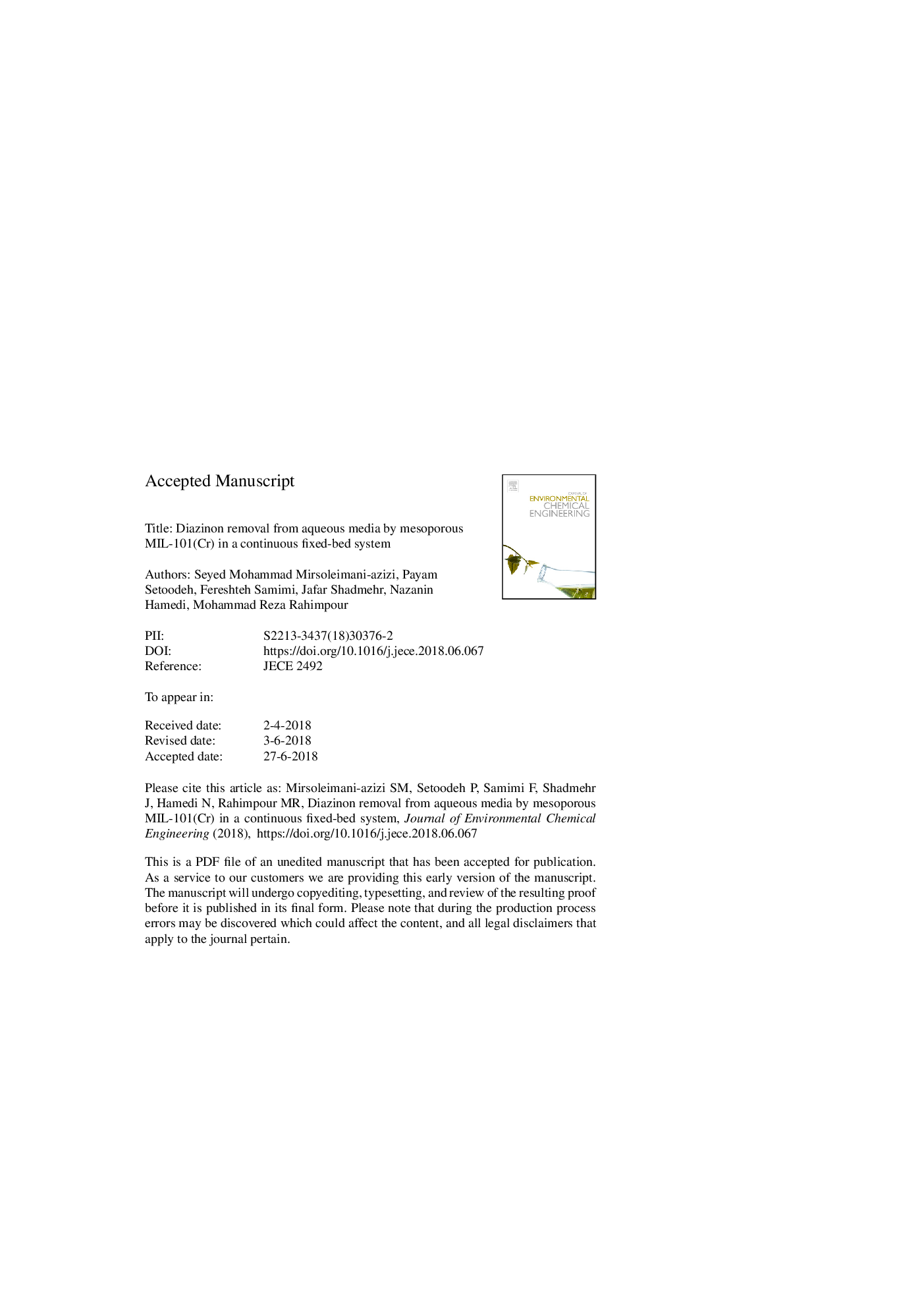| Article ID | Journal | Published Year | Pages | File Type |
|---|---|---|---|---|
| 6663917 | Journal of Environmental Chemical Engineering | 2018 | 40 Pages |
Abstract
Thanks to their remarkable features (i.e. extremely high surface areas and porous structures with tunable pore sizes), MOFs are promising materials for adsorption of different traceable pollutants from wastewaters. In this study, MIL-101(Cr), is synthesized and examined as a capable adsorbent for removal of diazinon from aqueous media in a continuous fixed-bed system. The properties of the MIL-101(Cr) are determined applying SEM, XRD, FTIR, TGA, HRTEM and BET characterization techniques. Accordingly, mesoporous octahedral structure, 96% crystallinity, up to 550â¯Â°C thermal stability and about 2600 m2/g BET surface area are obtained. The impacts of the operative factors (the initial pH, the initial diazinon concentration, the volumetric flow rate and the bed depth) on diazinon removal efficiency are further examined. Also, EDS and FTIR tests are employed to explore the diazinon adsorption on the adsorbent surface. It is obtained that neutral pH is the best choice to achieve the maximum removal efficiency (92.5%). The highest bed height (1â¯cm) contributes to the longest breakthrough time (13â¯min) while increase in volumetric flow rate and initial diazinon concentration lead to decrease of exhaustion time. Utilizing the experimental data, Langmuir isotherm is the best fitted adsorption isotherm model. Also, the Thomas model predicts the system's behavior better than Adams-Bohart one. It is the first time that MIL-101(Cr) is applied for adsorption of diazinon from aqueous solutions. As a consequence, it will undoubtedly have noteworthy impacts on agricultural wastewater treatment and can be considered for advanced research as an appropriate agent regarding practical remediation processes.
Keywords
Related Topics
Physical Sciences and Engineering
Chemical Engineering
Chemical Engineering (General)
Authors
Seyed Mohammad Mirsoleimani-azizi, Payam Setoodeh, Fereshteh Samimi, Jafar Shadmehr, Nazanin Hamedi, Mohammad Reza Rahimpour,
